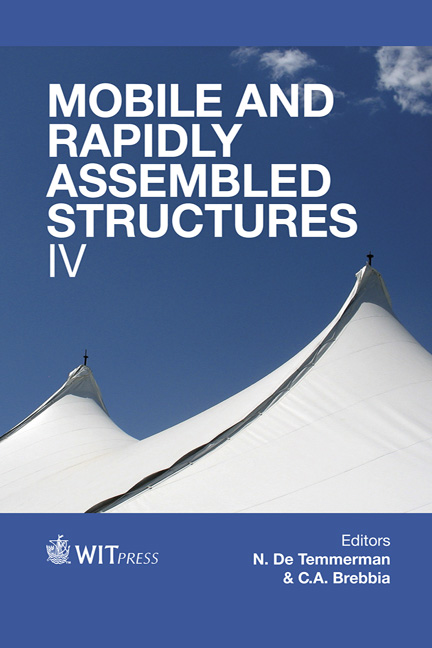Bio-inspired Tetrakaidecahedron Tensegrityoptimisation
Price
Free (open access)
Transaction
Volume
136
Pages
9
Published
2014
Size
330 kb
Paper DOI
10.2495/MAR140251
Copyright
WIT Press
Author(s)
H. Taheri & J. S. Kuang
Abstract
Through evolution, nature has solved many problems for living creatures in accordance with their needs and survival in direct response to physical forces. Among all needs of living creatures, mechanical stability and structural performance are of very high importance. Therefore, biomimicry can be a key to engineering mechanical problems. Cytoskeleton (CSK) is a network composed of filamentous biopolymers that mechanically stabilises the cell and actively generates prestresses resisted by external adhesive tethers to the extracellular matrix (ECM). The CSK and ECM form a synergetic tensegrity system. In addition, the three-dimensional tissue scaffolds is modelled as a periodic unit cell of tetrakaidecahedron geometry that packs to fill space. Optimisation is an unavoidable process for tensegrity analyses and design. In most cases of tensegrity optimisation research, the topology and connectivity are predefined. However, relaxing connectivity constraint has resulted in heavy and expensive formulation and computations in some limited researches. In this paper, imitating the tissue scaffold, the tetrakaidecahedral tensegrity is investigated. A convex optimisation is performed with relaxing the nodal predefined connectivity. The objective is to minimise the number of prestress modes by minimising the rank of weighted Laplacian matrix. The present method is concise and can be utilised for large-scale tensegrity systems. Keywords: biomimicry, tensegrity, tetrakidecahedron, optimisation.
Keywords
biomimicry, tensegrity, tetrakidecahedron, optimisation.





